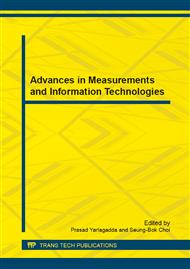p.605
p.609
p.613
p.617
p.621
p.625
p.631
p.637
p.641
The Influence of Training Step on Price Forecasting Based on Least Squares Support Vector Machine
Abstract:
Price forecasting based on training step is discussed in this paper. The purpose of forecasting is obtaining suitable commodity price forecasting model. This experiment uses a whole year price for ten type's mobile phone .The price data is extracted from http://www.jd.com/. The whole year data is used as the original data to improve Least Squares Support Vector Machine (LS-SVM) model based on the training step. By researching this forecasting method, the experiments are carried out under different training steps, different types cell phones depending on the accuracy rata. With the growth of the training step, the precision of the LS-SVM model cuts down obviously. The research can help consumers obtain the better purchase decision-making when they buy cell phones, provide cell-phone distributors with certain reference.
Info:
Periodical:
Pages:
621-624
Citation:
Online since:
February 2014
Authors:
Keywords:
Price:
Сopyright:
© 2014 Trans Tech Publications Ltd. All Rights Reserved
Share:
Citation:


